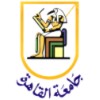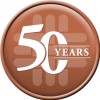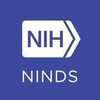
Effect of a Tailored Multidimensional Intervention on the Care Burden Among Family Caregivers of...
StrokeCaregiver Burden1 moreFamily caregivers are the key persons in the recovery and rehabilitation process of stroke survivors. Despite multiple researches recommended the development of interventions which are based on the family caregivers' needs and recommended the conduction of the interventions based on the integration of skill-building, psychoeducation, and peer support to relieve the care burden they feel, there are no studies conducted to evaluate the effect of such these interventions on the family caregivers of stroke survivors in Egypt. The purpose of this study is to evaluate the effect of a tailored multidimensional intervention on the care burden among family caregivers of stroke survivors. Using a randomized control trial, 110 family caregivers will be recruited from the community; from the outpatient clinics and rehabilitation clinics which are located at Mansoura city (Capital of Dakahlia Governorate) and the surrounding cities and villages. The participants will be randomized through 1:1 open-label randomization to the intervention group and the control group. The intervention group will receive the tailored multidimensional intervention. The intervention will last for 6 months. 3 home visits and 3 telephone interventions and 1 peer support will be conducted during the first 3 months. the home visits and telephone interventions will be conducted biweekly alternately. During the second 3 months, 3 telephone follow-ups will be conducted monthly. Regarding the control group, they will receive a simple educational booklet through one home visit. The primary outcome is the care burden (Zarit Burden Interview) and secondary outcomes are the perceived needs (Family Needs Questionnaire-Revised), coping strategies (Brief Coping Orientation to Problems Experienced) and quality of life (World Health Organization Quality of Life-BREF) among family caregivers. The primary and secondary outcomes will be assessed basically before the intervention and after the 3rd and 6th months since the start of the intervention.

Efficacy of Virtual Reality Exercises in STroke Rehabilitation: A Multicentre Study (EVREST Multicentre)...
Ischemic StrokeA multicentre, randomized, two parallel group study comparing virtual reality using Wii gaming technology versus Recreational activities in patients receiving conventional rehabilitation after an ischemic stroke. Primary Hypothesis: Virtual reality using the Wii gaming system is more efficacious in improving motor function than recreational therapy among patients receiving conventional rehabilitation following a recent ischemic stroke.

The Effect of Resistance to Participant-Supported Reaching on Workspace of the Hand in Severe Chronic...
StrokeDisturbances in movement coordination are the least well understood but often the most debilitating with respect to functional recovery following stroke. These deficits in coordination are expressed in the form of abnormal muscle synergies and result in limited and stereotypic movement patterns that are functionally disabling. The result of these constraints in muscle synergies is an abnormal coupling between shoulder abduction and elbow flexion (i.e. the flexion synergy), which significantly reduces the reaching function of an individual with stroke when they lift up the weight of the impaired arm against gravity. The investigators previous neurotherapeutic research, supported by a NIDRR Field Initiated research grant, has shown that the abnormal synergy between shoulder abduction and elbow flexion can be significantly reduced thus increasing total reaching range of motion in individuals with severe stroke. The previous work established progressive abduction loading as a key element to the rehabilitation of reaching. Although individuals with severe stroke benefited from the investigators previous work, residual flexion synergy continued to hinder normal arm function in most participants with severe stroke. This study will utilize the ACT3D robot, developed as part of the investigators previous NIDRR project, to incorporate resistance to reaching while accounting for the known benefits of progressive abduction loading. The investigators propose to randomize forty participants with severe stroke into two closely related interventions. The groups will both practice reaching under abduction loading, however, the experimental group will also move against resistance while reaching. Rigorous and quantitative investigation of therapeutic elements such as resistance to reaching and progressive abduction loading is only possible with a device such as the ACT3D. the investigators will be able to standardize the delivery of each intervention using kinematic and kinetic parameters, which will allow for a clear identification of the therapeutic effect of resistance to reaching. the investigators hypothesize that resistance to reaching in combination with progressive abduction loading will further increase dynamic multi-joint strength, increase total reaching range of motion, and increase arm function thus enhancing actual amount of use of the arm, participation in life roles, and quality of life in individuals with severe stroke.

Air Muscle and Task Practice in Upper Limb Stroke Rehab
StrokeMany patients who have sustained strokes are unable to effectively use their hemiparetic upper extremity. Limited mobility in the performance of daily activities, such as eating or dressing, adversely affects their quality of life and compromises independence. Rehabilitation techniques engaging the hemiparetic limb in repetitive task practice (RTP) may improve upper extremity function and quality of life in patients with stroke, but costs limit the number of patients that can utilize this type of therapy. Advances in microprocessor design and function make the use of an assistive device as an adjunct to RTP plausible. An innovative assistive repetitive motion (ARM) device using an "air muscle" has been developed specifically for the rehabilitation of the hemiparetic upper extremity. The primary aim of the proposed study is to collect pilot data to estimate the clinical effectiveness of using the ARM device in conjunction with RTP to improve upper extremity motor function and the quality of life of patients with stroke. Twenty sub-acute (3 to 9 mos. post-stoke) patients will be randomized to a RTP only or ARM + RTP group. The RTP group will receive 15 days (4 hours per day) of intensive one-on-one RTP therapy. The ARM + RTP group will use the ARM device for 2 hours per day and receive 2 hours of intensive RTP per day for 15 days. Clinical motor function and quality of life measures will be taken before and after the interventions and two months later. We hypothesize that the ARM + RTP group will exhibit greater improvements in motor function and quality of life measures than the RTP only group.

Intervention for Stroke Survivors and Their Spousal Caregivers
Cerebrovascular AccidentThis is an interdisciplinary, intervention study with stroke survivors and their spousal caregivers after discharge from a rehabilitation unit. It will determine whether couples receiving home visits from nurses and therapists over a 6 month period demonstrate better function and less psychological distress than couples who receive information by mail. All couples are visited every 3 months by a nurse who assesses their physical and psychosocial functioning.

Program of Rehabilitative Exercise and Education to Avert Vascular Events After Non-disabling Stroke...
Transient Ischemic AttackNon-disabling StrokeThe objective of the Program of Rehabilitative Exercise and Education to avert Vascular Events after Non-disabling stroke and Transient ischemic attack (PREVENT) Trial is to determine whether the timely delivery of secondary stroke prevention strategies will reduce modifiable vascular risk factors in two groups of people who have survived NDS or TIA. One group will receive a comprehensive education and exercise program (PREVENT); the other group will receive usual care (USUAL CARE). We will measure modifiable vascular risk factors in both groups. We will also compare the effects of PREVENT vs USUAL CARE on exercise capacity, walking endurance, and daily physical activity. In addition, we will compare thinking ability, depression, achievement of personal goals for healthy behavior, and health-related goal attainment and health-related quality of life. Finally, we will compare outcomes in urban and rural settings as well as costs of the PREVENT program and USUAL CARE in order to assess sustainability of the PREVENT program.

Non-Invasive Brain Signal Training to Induce Motor Control Recovery After Stroke
StrokeThe purpose of this trial was to evaluate the benefits of combination motor learning training and brain computer interface training for restoring arm function in people with stroke. Our aim was to determine whether the surface-acquired brain signal (electroencephalography (EEG)) can feasibly be used as a neural feedback system to drive more normal motor function in stroke survivors.

After Discharge Management of Low Income Frail Elderly
Heart FailureCongestive9 moreThe purpose of this study is to determine whether comprehensive post-hospitalization interdisciplinary care management can be an effective care delivery model to improve outcomes in low-income frail elderly.

Evaluation of an Individualised Written Education Package for Stroke Patients
StrokeThe primary aim of the randomised controlled trial was to evaluate the effectiveness of a tailored written education package ("What you need to know about stroke") on the outcomes of: Knowledge about stroke, self-efficacy, anxiety, depression, perceived health status, satisfaction with the content and presentation of the information received, and desire for additional information for patients following stroke and Knowledge about stroke, self-efficacy, anxiety, depression, satisfaction with the content and presentation of the information received, and desire for additional information for their carers. A secondary aim was to evaluate the effect of written information on the outcomes of knowledge about stroke, self-efficacy, anxiety, depression, and perceived health status of patients following stroke and on knowledge about stroke, self-efficacy, anxiety, and depression of their carers.

Enhancement of Use-Dependent Plasticity by Somatosensory Stimulation in Chronic Stroke
Cerebrovascular AccidentRecent studies have demonstrated that electrical stimulation delivered over the skin increases the muscle strength as measured by a dynamometer in chronic stroke patients. We recently also found out that such stimulation enhances the ability of healthy brains to learn faster, enhancing the beneficial effects of the motor training. The purpose of this study is to find out if this stimulation can enhance the ability of stroke patients to experience plastic changes in the brain. It may aid in the development of new strategies for rehabilitation after brain injury in the future. A clinical and neurological exam will be administered. Each patient will participate in three different sessions separated by at least 48 hours: a 2-hour peripheral nerve stimulation to the weak hand, a 2-hour peripheral nerve stimulation to the leg, and no stimulation. The sessions will be randomly ordered. A magnetic resonance imaging scan of the brain will be done as well. Nerve stimulation will be done by transcranial magnetic stimulation (TMS). In TMS, the head is immobilized within a frame. An insulated coil wire is placed on the scalp and brief electrical current passed through it. Participants may be asked to perform movements, do simple tasks, or simply tense muscles. Electrical activity of the muscles will be recorded with a computer. Some experiments may be recorded on videotape. Participants must be stroke patients who have recovered to the point of being able to make thumb movements, and the stroke must have occurred more than 6 months ago.
